SUMMARY
This is AI generated summarization, which may have errors. For context, always refer to the full article.

After two months on the 2022 campaign trail covering Isko Moreno, I’ve had several cases of déjà vu, harking back to the last presidential campaign I followed – that of President Rodrigo Duterte.
Having been assigned to report on their campaigns has given me a unique perspective into the similarities and differences between the two mayors who have often been compared.
Both are colorful local chiefs who captured the national spotlight. The one who became president still prefers to be called mayor. The one running for president goes by that word’s street-slang version, “yorme” (if elected, Moreno wants to make “longpangu” happen – a variation of pangulo).
Right after launching his presidential bid, Moreno was even labeled “Duterte Lite” by some quarters, because of his remarks in interviews that sounded sympathetic to Duterte.
He’s been called Duterte’s “secret candidate,” rumors fueled by months he spent as a Duterte appointee and his tapping Lito Banayo as campaign manager. Banayo was a key member of the President’s own 2016 campaign.
From what I have seen in his campaign, however, there is no evidence of Moreno being controlled by Duterte in any way, nor him coordinating somehow with the President.
In the two public events where the two were together – Rizal Day rites last December and a bridge inauguration last Tuesday, April 5, Duterte did not interact with Moreno in any special way.
Back in September 2019, Duterte said this about Moreno: “Mas mahusay siya keysa akin, sa totoo lang.” (He is better than me, truth be told.)
But fast-forward to 2021, he mocked him for his past sexy film roles and criticized his city’s vaccination drive.
Branding: Populist paragon of political will
But regardless of the real dynamics between the two, their similarities are striking.
First, their populist messaging.
Both Moreno and Duterte claim to speak for, and fight for, the ordinary Filipino. On the other side of that coin, both also claim to be the enemy of the elite.
For Duterte, the enemies are the “oligarchs” and the politicians from “imperial Manila” who are controlled by these oligarchs. For Moreno, it is the “pulahan” (Marcoses and all the big political parties behind him) and “yellow-pink” (Robredo and Liberal Party).
But of the two mayors, it is Moreno with the authentic “galing sa mahirap” backstory. He fought tooth and nail to get from garbage collector to Manila mayor. Duterte, meanwhile, had always been in the middle to upper class of society – with a teacher and lawyer as parents. His father became a member of the local political elite when he was elected Davao governor and then went further up as Cabinet member of president and dictator Ferdinand Marcos.


Isko and Digong make the same promises of political will and decisive leadership.
“I can tell you now that I will provide leadership,” said Duterte during the Cagayan de Oro presidential debate in mid-March 2016.
Isko’s version: “I get things done,” invoked in presidential debates and several other fora.
They both use their home cities as launching pads for their national political ambitions, showcasing their local accomplishments as a “prototype” of what they can do nationally.
“Davao City is my Exhibit A,” Duterte told Rotary Club Manila members in January 2016.
“Nagawa sa Manila, kayang gawin sa buong bansa (We did it in Manila, we can do it for the whole country),” Moreno said in the second Comelec presidential debate on Sunday, April 3.
Duterte’s platform, which not many people know, was launched in Cebu City, focused on crime and peace and order. Moreno’s platform is more about the economy and technology.
Moreno’s stances on various issues and proposed solutions to national challenges are better-researched and more well-thought-out. His approach to the West Philippine Sea conflict with China is patterned after Indonesian President Joko Widodo and based on consultations with retired justice Antonio Carpio. Moreno has enough bandwidth during the hectic campaign season to research low-earth orbit satellites and agrivoltaics, which he has mentioned often as his solutions to poor internet access and energy security.
Their jokes
Their authenticity and approachability are key to their appeal. When listening to Duterte and Moreno, one gets the feeling they are fun to be with.
Banayo, who knows both men, describes Duterte’s sense of humor as “wry” while Isko’s as “rather slapstick.”
“Gusto ‘nyo ba malinis na tubig, inumin?” Moreno quipped during an Iligan City rally. “Kasi nagtataka ako, dito sa Iligan, ang dami ‘nyong waterfalls, pero yung water ‘nyo, false,” he joked, generating appreciative laughs from the audience.
(I’m curious because here in Iligan, you have lots of waterfalls but your water is false.)
Moreno’s sense of humor is definitely more wholesome. Possibly his most “risque” joke is the one about how wives would be “bukang-buka” wide open with their husbands if they brought home more money. The punchline would be Isko clarifying that he meant wide open in their “embrace.” In contrast, Duterte has joked about raping an Australian missionary.
Below are videos of audience reactions to Duterte in 2016 and audience reactions to Moreno in 2022.
Similarities in campaign strategies
In terms of edging out campaign rivals, Duterte systematically took down Grace Poe (by riding on the issue of her citizenship) and Mar Roxas (by bringing up the Mamasapano crisis and other failings of the Aquino administration).
Moreno has been determinedly targeting front-runner Marcos Jr., bringing up his family’s P203-billion estate tax deficiencies and promising to collect it if elected. His swipes against another rival, Vice President Leni Robredo, are more muted but encompassed by his general “disdain” for political “elites.”
There are other key similarities in their campaigns. Both carried small senatorial slates. In Duterte’s case, his relatively unknown bets – Sandra Cam, Dionisio Santiago, and Rafael Alunan – were not even an official slate but more like hangers-on. Moreno’s slate is small but at least official – composed of Marawi civic worker Samira Gutoc, legal talk show co-host and former Quezon City official Jopet Sison, education entrepreneur and nurse Carl Balita, and former agrarian reform secretary John Castriciones. The four actually talk about platforms and their legislative agenda during sorties.


Both Duterte and Moreno did not clinch major political endorsements at the onset. The Davao City mayor was then the race’s dark horse. But his fate, and the reception of local politicians for him, took a turn when he inched ever closer to the top of surveys.
In fact, Duterte’s “messaging events” are quite similar to Isko’s town hall meetings and “listening tour” gatherings – speeches before small gatherings of people from specific sectors without the presence of local government big-wigs.
As a presidential candidate, Duterte was very open to media interviews. He would grant them on the fly, often without coordinating with his campaign’s media relations team. Chances of an ambush interview would increase if there was a good-looking female reporter in the event. He answered any question you threw and did not ask for topics in advance. Things are much different now. The President has not lifted the coverage ban on Rappler reporters. His rants against media network ABS-CBN led to their loss of a franchise.
Moreno is also extremely accessible to reporters but is more structured about it. Reporters can expect a morning interview each day Isko is campaigning. These interviews tend to happen on the side of busy highways or deserted rural roads – wherever the Mayor’s motorcade will start from. Moreno, too, is game for any question and does not pick which topics to discuss.
Rough vs. smooth
The similarities between the two men are made even more striking by their differences, which are apparent just by looking at them.
Duterte is all rough edges – foul mouth, political incorrectness, rarely following the script. But Moreno is all sheen and suave, qualities no doubt honed by his years as an actor. His matinee-idol good looks are as much a crowd draw as his inspiring rags-to-riches story.
A key difference between Moreno and Duterte’s campaigns is that the former is much easier to manage.
Banayo described Duterte, his principal in 2016, as someone who said whatever he wanted, a possible liability in a campaign where one can be “canceled” based on a mere slip of the tongue.
“Mayor Duterte was someone you could not really control what came out of his mouth… What comes to mind goes out,” Banayo told me in an interview back in September 2021.
“Isko prepares. Even if he’s very good at extemporaneous speech, he prepares, he has bullet [points] in his mind. He studies and he listens to advice,” added Banayo.

There is something of the packaged, even scripted, in Moreno. When he speaks before a Class D or E crowd, he peppers his remarks with street slang like “wakali” (kaliwa or left) or “utaw” (tao or people) and even gambling terms. But in front of an A or B crowd, he speaks in accented English with wrong grammar here and there.
Duterte is more likely to retain his crassness or penchant for expletives in a larger variety of crowds. He’s uttered rape jokes and cursed world leaders in gatherings with migrant workers and symposia of government workers. He would only adjust his speaking style significantly for the most formal events – like with diplomats or businessmen.
Could it have something to do with age? Isko and Duterte are three decades apart.
The 47-year-old Isko’s youth is a crucial element of his governance promise. Slogans like “Bilis Kilos” and “Posible!” are all about the idealism, hope, and vigor that a young leader could bring. Moreno has pointed to youthful presidents who have made a mark, Ramon Magsaysay, John F. Kennedy, Barack Obama, Jacinda Ardern, and more recently, Ukraine’s Volodomyr Zelenskiy. If given a chance, he says, the Philippines could find such promise in him.
In contrast, Duterte, now 77, was one of the oldest presidential candidates (same age as the late Miriam Defensor Santiago then, 71) in 2016. Even on the campaign trail, he talked about his various health issues and joked about being old (see video below).
Habits, work ethic
On the whole, the Manila mayor is much more systematic and detail-oriented than the shoot-from-the-hip Duterte. Moreno does his own research on a variety of subjects whereas Duterte often relies on cues from advisers on the many topics outside of his comfort zone of crime and peace and order.
Moreno admitted one favorite pastime of his is to read things up on Google or go on social media. This means he gets his information from a variety of sources. Duterte relied on his aide Senator Bong Go or other members of his inner circle for information. It was Go who would show him anything of interest on his smartphone or shepherd into the room the person or group who wished to speak with Duterte.
Banayo, on Wednesday, April 6, described Moreno as “very open, very trusting,” whereas Duterte “keeps his deep thoughts close to his chest.”
“About the only person PRRD would fully confide in during the 2015 to 2016 campaign was Bong Go,” said Banayo.
Another key difference with practical implications: Moreno can reliably be counted on to wake up early. Duterte rarely held campaign events earlier than noon because of his penchant for sleeping in and staying up late.
Which is not to say Moreno is never late. All presidential candidates have been late to sorties. But Moreno is capable of maxing out an entire day of campaigning, starting with a motorcade beginning 8 am and then ending the day in a rally or concert lasting until 7 pm or later. Duterte’s habits greatly limited his campaign schedule.
Different levels of success
But if Isko is so similar to Digong, why isn’t he doing as well in surveys as the older mayor in the same time period in 2016?
In Pulse Asia’s March 2016 survey, Duterte was already in second place with 24% – only a few points away from then front-runner Senator Grace Poe (28%).
Moreno, in Pulse Asia’s March survey released on Wednesday, April 6, is a far third with 8%, lagging behind Marcos Jr. (56%) and Robredo (24%).
Political science professor Aries Arugay said while Moreno’s anti-establishment and anti-elite rhetoric may resonate with voters who are sick of voting the same surnames into power, it may not be as sellable.
“It might be too early to play that game given that strategy has delivered the presidency to Duterte in 2016,” Arugay told Rappler.
“Unlike before wherein Duterte was seen as a more legitimate holder of that belief of ‘iba naman‘ (someone different), I don’t think a lot of Filipinos are buying that right now because they had just bought it in 2016,” he added.
This is unfortunate, since, from what I see, Moreno might just be precisely the kind of leader some people thought they saw in Duterte. Moreno is the Duterte without the shady DDS history, the cursing, the blatant misogyny, the lack of transparency, the limited bandwidth for rigorous analysis. Of course, Moreno could always take on unsavory traits later on or could be hiding them masterfully. But I can only report based on what I see from my interactions with him, and before, with Duterte.
This year’s election is also unusual in that the front-runner commands an unheard of 50% to 60% rating in voter preference surveys. If Marcos Jr. was not so dominant, Moreno would have a bigger slice of the pie.
But as far as Moreno’s team is concerned, surveys like Pulse Asia’s are not reliable.
They are firm in their belief that a “silent majority” exists which is not captured by the polls because of the “toxic” environment of bashing done by Marcos and Robredo supporters.
Still, one takeaway from Pulse Asia is that Moreno might be the candidate the least number of people object to. He is still the people’s top second choice for president, with 23% in that category saying they would pick him if not for their top choice.
The challenge for Moreno, with only a month left before elections, is to somehow get to second place and shift momentum to his campaign, a stupendous feat. Can it be done or should he read the handwriting on the wall? – Rappler.com
Add a comment
How does this make you feel?
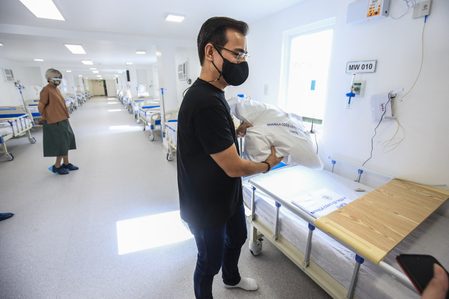
![[Newspoint] Improbable vote](https://www.rappler.com/tachyon/2023/03/Newspoint-improbable-vote-March-24-2023.jpg?resize=257%2C257&crop=339px%2C0px%2C720px%2C720px)
![[Newspoint] 19 million reasons](https://www.rappler.com/tachyon/2022/12/Newspoint-19-million-reasons-December-31-2022.jpg?resize=257%2C257&crop=181px%2C0px%2C900px%2C900px)
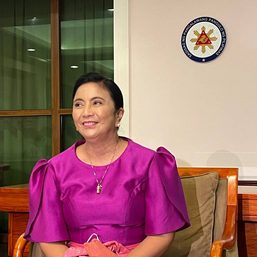
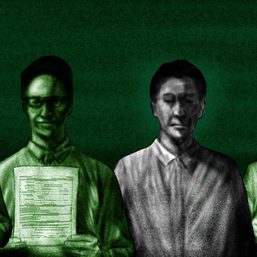
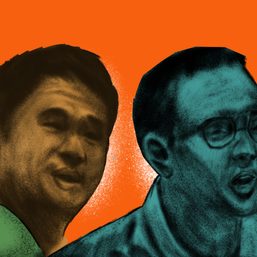
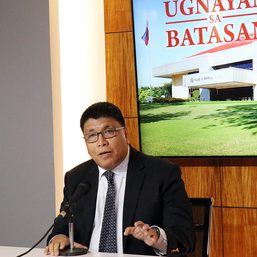
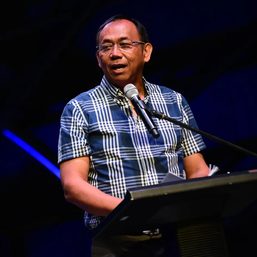
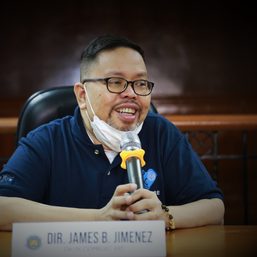
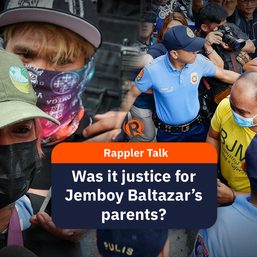
![[New School] Tama na kayo](https://www.rappler.com/tachyon/2024/02/new-school-tama-na-kayo-feb-6-2024.jpg?resize=257%2C257&crop=290px%2C0px%2C720px%2C720px)
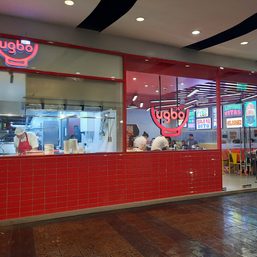
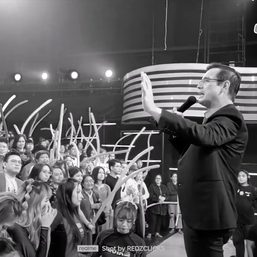
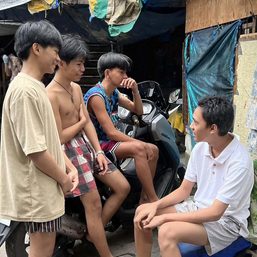
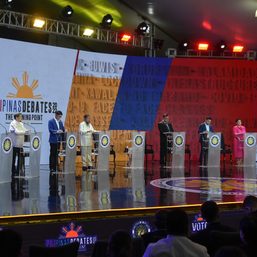
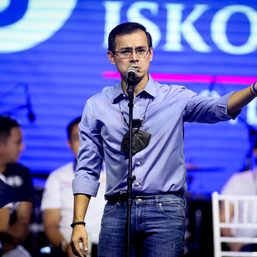
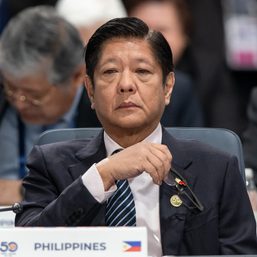
![[EDITORIAL] Diplomasya ni Rodrigo Duterte sa Tsina: Nakaluhod nang dikit ang noo sa lupa](https://www.rappler.com/tachyon/2024/05/animated-duterte-china-panatag-shoal-carousel.jpg?resize=257%2C257&crop_strategy=attention)
![[The Slingshot] Alden Delvo has retired](https://www.rappler.com/tachyon/2024/05/slingshot-alden-delvo-05042024.jpg?resize=257%2C257&crop=243px%2C0px%2C720px%2C720px)
![[Newspoint] Willful indifference](https://www.rappler.com/tachyon/2024/05/np-willful-indifference-05032024.jpg?resize=257%2C257&crop=270px%2C0px%2C720px%2C720px)

There are no comments yet. Add your comment to start the conversation.